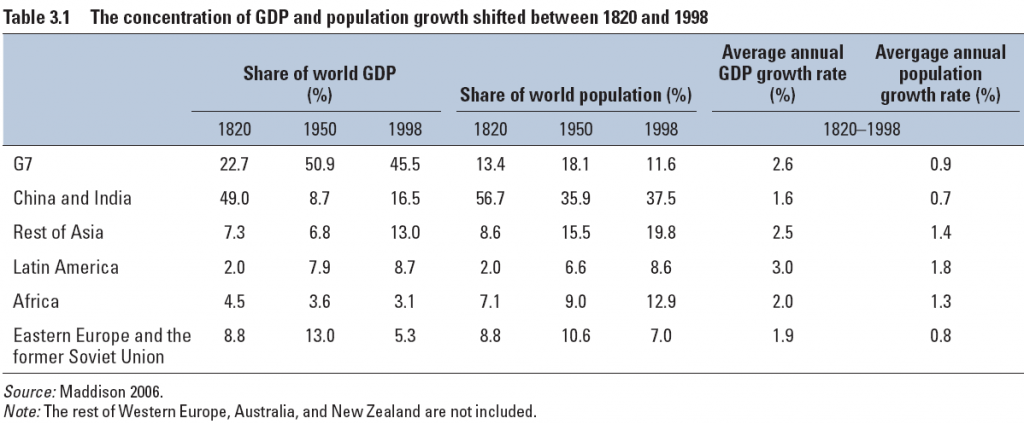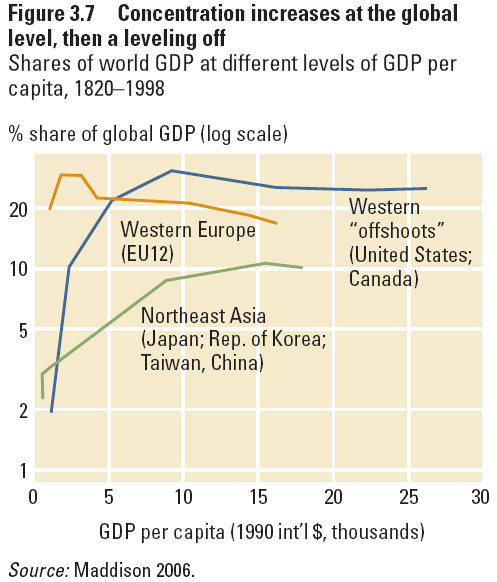an excerpt from the WORLD DEVELOPMENT REPORT 2009 (at page 106):
Economic output is spatially concentrated by any measure and across geographic scales. A quarter of the world’s GDP is produced on just 0.3 percent of the land area (about the size of Cameroon), half on 1.5 percent, and nine-tenths on 16 percent. China, Japan, and the United States produced about half of global GDP in 2006, and the 15 largest economies produced about 80 percent.
Early in the Industrial Revolution, at the beginning of the nineteenth century, GDP per capita in today’s industrialized countries was about twice that of today’s developing and emerging countries (see table below). But total GDP in China and India, which had far larger populations, was more than twice that in today’s G7 countries. By the middle of the twentieth century, the G7 countries accounted for more than half of global output (about 60 percent if the other western industrial countries are included).


North America and Japan grew the fastest at 3.5 and 2.8 percent a year between 1820 and 1998.40 The four largest European economies grew at an annual average of about 2 percent, not very different from growth rates in Africa, Eastern Europe, and the smaller Asian developing countries. But while GDP growth exceeded population growth by 1.7 points in the G7, it did so by only 0.8 points in China and India and by 0.7 points in Africa. Over the 180 years to the end of the twentieth century, these different growth rates moved the concentration of economic production more toward the northern industrialized countries.
How did this concentration come about?
The concentration of economic mass in today’s western industrialized countries and Japan has its roots in eighteenth-century economic and technological innovation.
